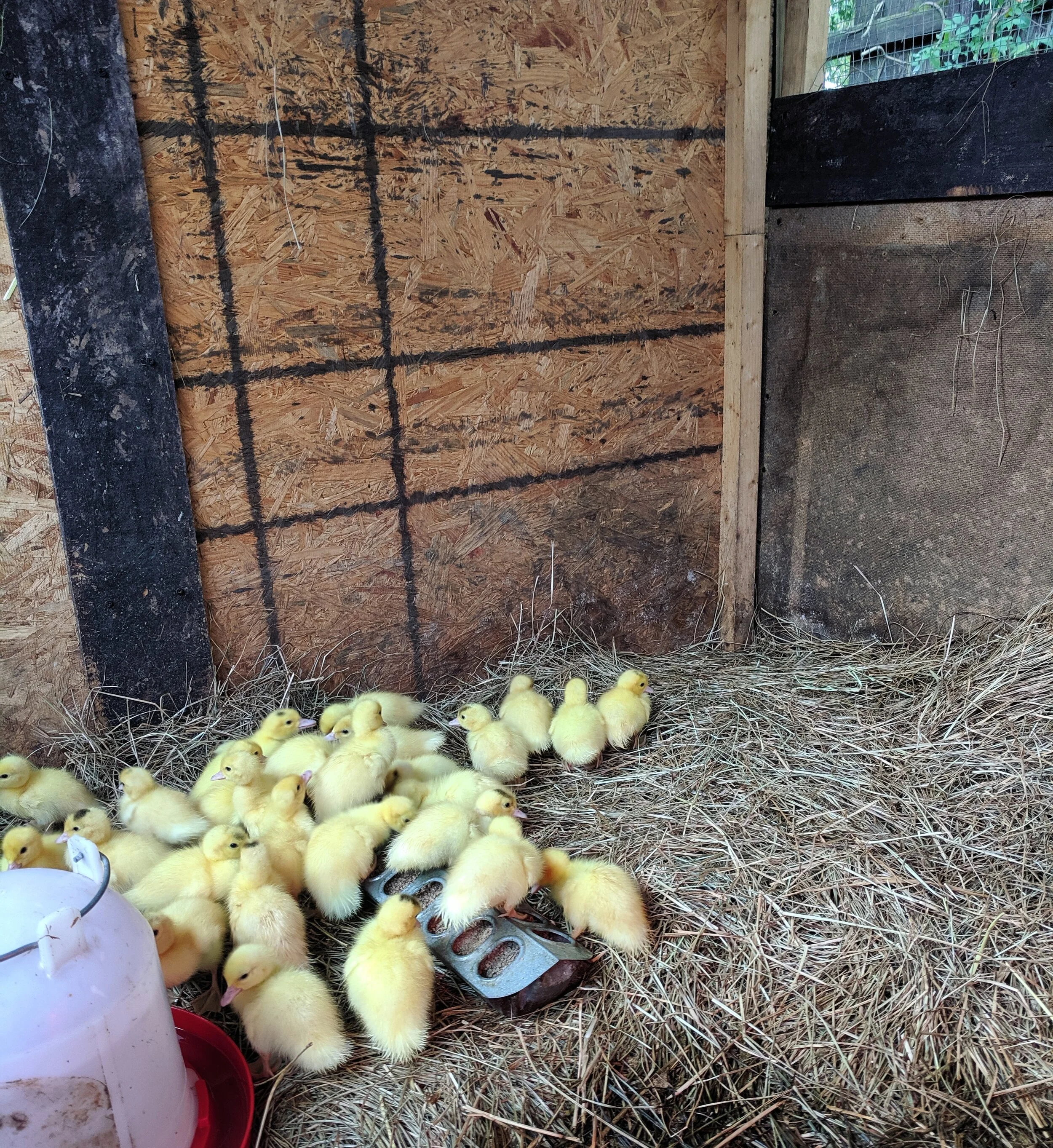Our Farming Process
What is Foie Gras?
During Pre-Gavage, our ducks are still on pasture and free to forage on insects, acorns, and grass
In the wild, if you were to go duck hunting in the north just before the winter migration, you’d see wild-caught foie if you had some luck. There are stories of hunters who have begun cleaning a duck carcass and found a large, golden liver, many times its normal size, consuming the space inside the cavity.
While “fatty liver” is a disorder in humans, it is a biological necessity for the migratory duck and goose. “Lipogenesis”, as it’s called, occurs primarily in the liver for migratory waterfowl, and great stores of fat are kept there for the long journey southward.
Foie gras production is, in the end, mimicry of a natural process. Just as we’ve observed the ability of the cow to grow on grass and bulk up on grain and thus replicate this process en masse, so have we observed the duck’s ability to grow on grass, bugs, and mixed grains, and to fatten its liver on corn.
Our Process
4 day old muskovy ducklings
At Backwater Duck Farm, we are in the business of respecting our animals. When they arrive, they are kept in a warm brooder until they reach 3 weeks of age, at which point they are put out on a rotational grass pasture system.
From Week 3 to Week 12, they enjoy sunshine, forage, clean water, and a grain ration. During the last two weeks on pasture, we take them through a process called “pre-gavage,” where they have a more fixed meal time to encourage them to self-gorge and stretch their crop. From Week 13 to Week 15, they move into the hand-feeding stalls, where they run freely on fresh straw during the Fattening Phase. During this time, we hand-feed each duck individually, ensuring they receive precisely the amount of nutrition necessary to bring them healthily to harvest.
The truth is, a happier, healthier duck is a tastier duck, and the key to a beautiful product is a beautiful process. We hope you enjoy it as much as we do!
Come out and see us anytime.





